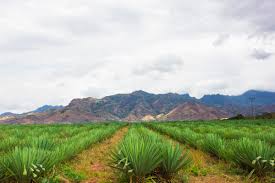Tanzania is no novice to sisal production, if anything, it is one of the world’s oldest sisal producing countries. Dating back to the late 19th century when the region was then known as the German East Africa Company, sisal was produced by the colonialists, at which time it was the German administration and later the British.
Reports state that sisal production was the colony’s largest export so much that at the time of independence in 1961, Tanzania was the largest exporter of Sisal in the world.
Now, almost 6 decades down the road, Tanzania is working on regaining the status. For one, a quick visit around the sprawling sisal farms that run for miles and miles with their pointed spikes reaching for the skies, one can tell, little to no upkeep is been done to these plantations.
So the government, in June, warned that it will revoke all undeveloped farms. In that recent government inspection of sisal farms in the country, Regional Commissioner (RC), Eng Evarist Ndikilo of Tanga, one of the highest sisal producing regions in the country, said the government has no quams with investors, as long as they develop the resources instead of leaving them lying idol.
Speaking to local media when the country’s Premier Kassim Majaliwa visited the region, he said, “Coast Region was among the best producers of sisal but things changed because some of the farmers are now owned by investors and they are not developed; We will therefore repossess them.”
The production potential is huge. Take for instance Ubena Highland Estate located in the Chalinze District Council and the Mohamed Enterprises in Kibaha District, together, these two plantations cover some 10,007 hectares, and produce over 2,000 tonnes every year.
This is not the first tie the government of Tanzania has issued this particular warning. Back in 2018, the Minister for Lands, Housing and Human Settlements Development, Mr William Lukuvi, directed the Tanzania Sisal Board (TSB), to assess sisal plantations across the country and revoke ownership of people who have failed to develop the farms.
The government said the intention was for the repossessed farms to be given to new investors who have the ability to develop them; “The government has no intention of chasing away investors, but welcomes efficient investments that will boost the country’s revenues,” he told local media.
In his words, Prime Minister, Kassim Majaliwa said: “We have now added sisal and palm crops to priority crops…I direct all regional authorities to support small, medium and large sisal farmers.”
“In the 1960s, Tanzania ranked number one in sisal production in the world, producing over 235,000 tonnes… and earned about over 65 per cent of the foreign currency,” recalled and bemourned the fact that since then, production dropped to a mere 36,000 tonnes.
Ever since, the government has been working on a strategy to restore and strengthen the sector. Several idol assets have been recovered and repurposed like the Mkonge House that has now been handed back for communal use, storage and developing of the sisal fibres.
Education programs have been started where farmers are taught of the advantages and opportunities available in sisal production.
ALSO READ
Horticulture exports gaining momentum
Sisal in energy production: More than mats and hand bags
While traditionally we hear sisal and think ropes or sisal mats, hats and handbags, the sisal fibre is actually only a chip off the iceberg.
During the production of sisal, only 2-5% of the plant is utilized. The remaining bio material is used as fertilizer or thrown away. Here is where the magic starts. In the modern age, anytime you hear waste material you should think recycle, and if the waste material is organic, then you should think energy.
Tanzania has done just that. Tanzania is using the sisal plant waste material for bio-gas production. Bio-gas is clean safe source of energy a much better option to fossil fuel. Tanzania looses so much forests land every year which is cleared fo charcoal and fore wood. Having a secondary source of energy that is readily available and affordable goes along way to save Tanzanian forests, to say the least.
A company called the Katani Limited has constructed the country’s first Sisal waste bio gas power plant.The project helps provide energy for rural establishments and the government plans to encourage the practice to help increase the country’s energy output and reduce foreign exchange losses from the purchase of fossil fuels.
Currently, the plant produces 1 MW of electricity and organic fertilizers which help reduce the company’s costs. The Katani limited plans to build 5 more of the plants in a joint venture with a Chinese company at their various estates.
This is only one option of what the sisal plant can be used for in terms of energy production. As Tanzania moves to revive the sisal subsector, the country must invest in research on the use of the by products of sisal.
ALSO READ
Africa’s energy demands to spike post-Covid 19
